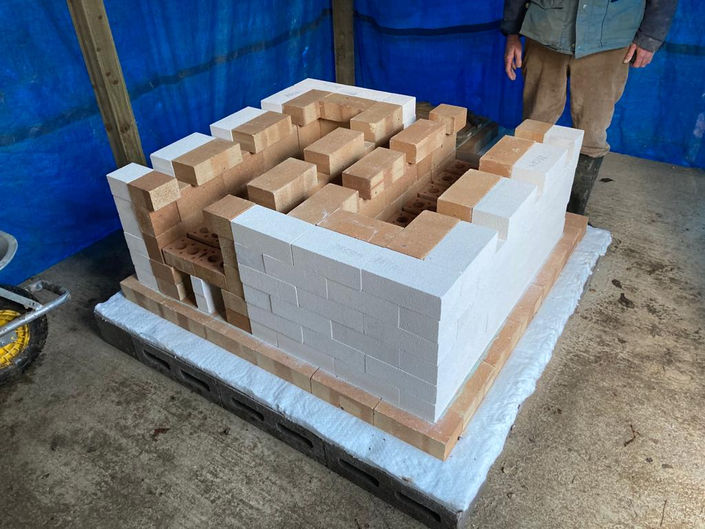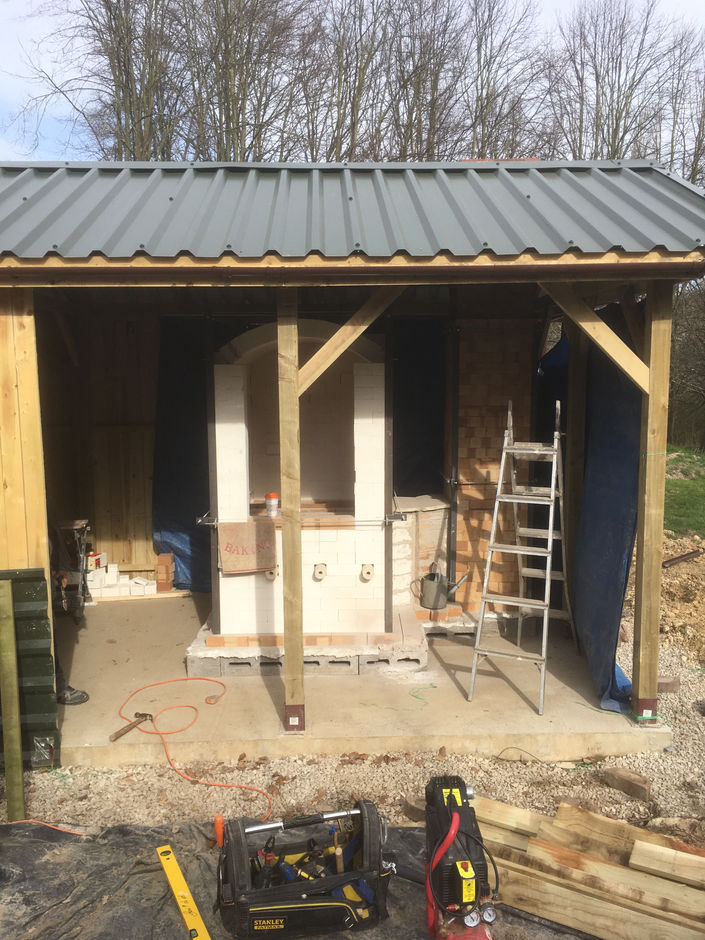Making Methods
Most of my pots are thrown on either my electric or kick wheel (smaller pots often thrown “off the hump” from one large piece of clay)and frequently altered in some way by eg incising or adding finger-wiped slip. Recently I have been making bottle forms which are slab built to create a faceted shape with a thrown base and neck. The bases of pots are either left with the shell-like pattern created by the wire used to remove them from the wheel or the pot is inverted when leather hard and a foot is turned (in Japan the turned foot of a pot is much revered and bowls are often displayed for sale upside down to show off the foot).



Glazing
My staple glazes are ash glazes made using the ash from the wood burning stove in my workshop. In addition I use tenmoku (dark brown/black) and blue glazes combined with the application of various oxides to decorate pots either under or over glazes. Glaze is applied in a variety of ways including pouring, dipping and painting sometimes using liquid “wax resist” to keep the foot of a pot free of glaze.

Wood Kiln
In 2020/21 I built a large (c.35 cubic foot stacking chamber) wood burning kiln in my garden. It is an arch roofed, downdraught kiln with two stoking chambers built according to a design by the well known kiln maker Joe Finch who has been an inspiration and a great help with the detail of the kiln construction and firing. Starting to fire and getting to know the kiln has been hugely exciting. The first few firings have yielded some exceptional results and very different from one firing to the next - all part of the fun and unpredictability of wood firing. I have been keen to involve others in the whole process from firing pots by other makers to sharing the work of operating the kiln – from wood gathering to stoking. This is both because I couldn’t do it all myself but, mainly, because it is a lovely process to share with others!



















